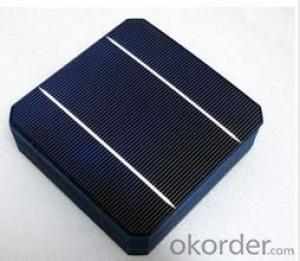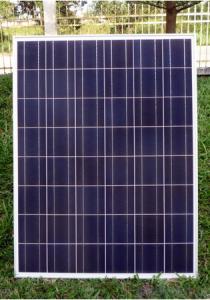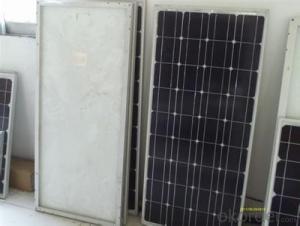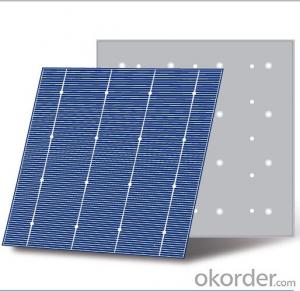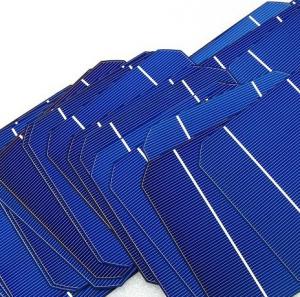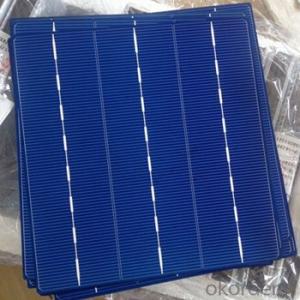Roof Shingle Solar Cells - Hot Sale TUV CE UL MCS CEC Monocrystalline Silicon Solar Cells Made in China
- Loading Port:
- China Main Port
- Payment Terms:
- TT OR LC
- Min Order Qty:
- -
- Supply Capability:
- -
OKorder Service Pledge
Quality Product, Order Online Tracking, Timely Delivery
OKorder Financial Service
Credit Rating, Credit Services, Credit Purchasing
You Might Also Like
Quick Details
| Place of Origin: | Model Number: | ||||
| Material: | Size: | Number of Cells: | |||
| Max. Power: | TYPE: |
Packaging & Delivery
| Packaging Detail: | COMMON PACKING |
| Delivery Detail: | 15 DAYS |
Specifications
solar panel Mono crystalline 250w
1.100% A grade cell
2. Positive Tolerance
3. Super quality competitve price
HOT SALE TUV CE UL MCS CEC solar panel Mono crystalline 250w made in China pecification
Mechanical Characteristics
| Solar Cell | Mono-crystalline silicon 156 × 156 mm (6 inches) |
| No. of Cells | 60 (6 × 10) |
| Dimensions | 1640 × 992 × 40mm |
| Weight | 20.0 kgs |
| Front | Glass 4.0 mm tempered glass |
| Frame | Anodized aluminium alloy |
| Junction Box | IP67 rated (3 bypass diodes) |
| Output Cables | TUV (2Pfg1169:2007), UL 4703, UL444.0 mm2, symmetrical lengths (-) 900mm and (+) 900 mm |
| Connectors | MC4 connectable |
| Mechanical load test | 5400Pa |
| Resistance | 277g steel ball falls down from 1m height and 60m/s wind |
- Q: Can solar cells be damaged by hail or other weather events?
- Yes, solar cells can be damaged by hail or other severe weather events. Hailstones can potentially crack or shatter the surface of the solar panels, affecting their efficiency and functionality. Similarly, extreme weather events like hurricanes or heavy storms can cause physical damage by dislodging or breaking the panels, leading to a decrease in their performance. It is important to ensure proper installation and maintenance to minimize the risk of weather-related damage to solar cells.
- Q: What is the impact of shadows on solar cell performance?
- Shadows have a significant negative impact on solar cell performance as they obstruct sunlight from reaching the cells. Even a small amount of shading, such as from trees, buildings, or other objects, can severely reduce the efficiency of the solar cells and decrease the overall energy output. Shadows create variations in the intensity of sunlight hitting different parts of the solar panel, leading to mismatched currents and reduced power generation. Therefore, it is crucial to minimize or eliminate any sources of shading to maximize the performance and efficiency of solar cells.
- Q: How do solar cells compare to fossil fuel-based power generation?
- Solar cells have several advantages over fossil fuel-based power generation. Firstly, solar cells generate electricity by harnessing sunlight, which is a renewable and abundant source of energy, whereas fossil fuel-based power generation relies on finite and polluting resources like coal, oil, and gas. Additionally, solar cells have a significantly lower environmental impact as they produce no greenhouse gas emissions during operation. Solar cells also require less maintenance and have a longer lifespan compared to fossil fuel power plants. However, solar cells have limitations such as intermittent power generation and higher initial costs, but advancements in technology are addressing these challenges. Overall, solar cells offer a cleaner, more sustainable, and increasingly cost-effective alternative to fossil fuel-based power generation.
- Q: Are solar cells affected by pollution?
- Solar cells can be affected by pollution, particularly air pollution, as it can reduce the amount of sunlight that reaches the cells. This can result in a decrease in their efficiency and overall energy production. However, regular cleaning and maintenance can help mitigate the impact of pollution on solar cell performance.
- Q: How do solar cells handle hail or other severe weather conditions?
- Solar cells are designed to withstand severe weather conditions including hail. They are made with durable materials such as tempered glass that can handle impact from hailstones. Additionally, solar panels are tested and rated for their ability to withstand extreme weather events, ensuring their resilience in harsh conditions.
- Q: What is the impact of pollution or smog on solar cell performance?
- The impact of pollution or smog on solar cell performance is significant. These environmental factors can reduce the amount of sunlight reaching the solar cells, leading to a decrease in their efficiency. Airborne particles, such as dust, soot, and pollutants, can deposit on the surface of the solar panels, blocking and scattering the sunlight. This reduces the absorption of solar radiation and hampers the conversion of light into electricity. Additionally, smog can further diminish solar cell performance by creating a haze that limits the clarity and intensity of sunlight. Overall, pollution and smog can have a detrimental effect on the efficiency and output of solar cell systems.
- Q: What is the impact of solar cells on reducing greenhouse gas emissions?
- Solar cells have a significant impact on reducing greenhouse gas emissions as they generate clean and renewable energy from the sun without producing any harmful emissions. By replacing traditional fossil fuel-based electricity generation, solar cells help to mitigate climate change by reducing the release of greenhouse gases, such as carbon dioxide, into the atmosphere. This transition to solar energy not only contributes to a cleaner environment but also helps in achieving global climate goals and creating a sustainable future.
- Q: How do solar cells perform in desert environments?
- Solar cells perform exceptionally well in desert environments due to the abundance of sunlight and high temperatures. The vast open spaces and lack of cloud cover allow solar panels to receive maximum exposure to sunlight, resulting in higher energy production. Additionally, the dry and arid conditions in deserts help reduce dust and dirt accumulation on panels, ensuring optimal performance and efficiency.
- Q: Can solar cells be used to power electronic devices?
- Yes, solar cells can be used to power electronic devices. Solar cells convert sunlight into electricity, which can then be used to power a wide range of electronic devices such as smartphones, laptops, calculators, and even larger appliances like refrigerators or streetlights. This allows for a sustainable and renewable source of energy for various applications.
- Q: What is the role of solar cells in powering off-grid cabins?
- Solar cells play a crucial role in powering off-grid cabins by harnessing sunlight and converting it into electricity. These cells, also known as photovoltaic cells, generate renewable energy that can be stored in batteries for later use. This sustainable power source eliminates the need for traditional electricity grids, allowing off-grid cabins to be completely self-sufficient.
Send your message to us
Roof Shingle Solar Cells - Hot Sale TUV CE UL MCS CEC Monocrystalline Silicon Solar Cells Made in China
- Loading Port:
- China Main Port
- Payment Terms:
- TT OR LC
- Min Order Qty:
- -
- Supply Capability:
- -
OKorder Service Pledge
Quality Product, Order Online Tracking, Timely Delivery
OKorder Financial Service
Credit Rating, Credit Services, Credit Purchasing
Similar products
Hot products
Hot Searches
Related keywords
